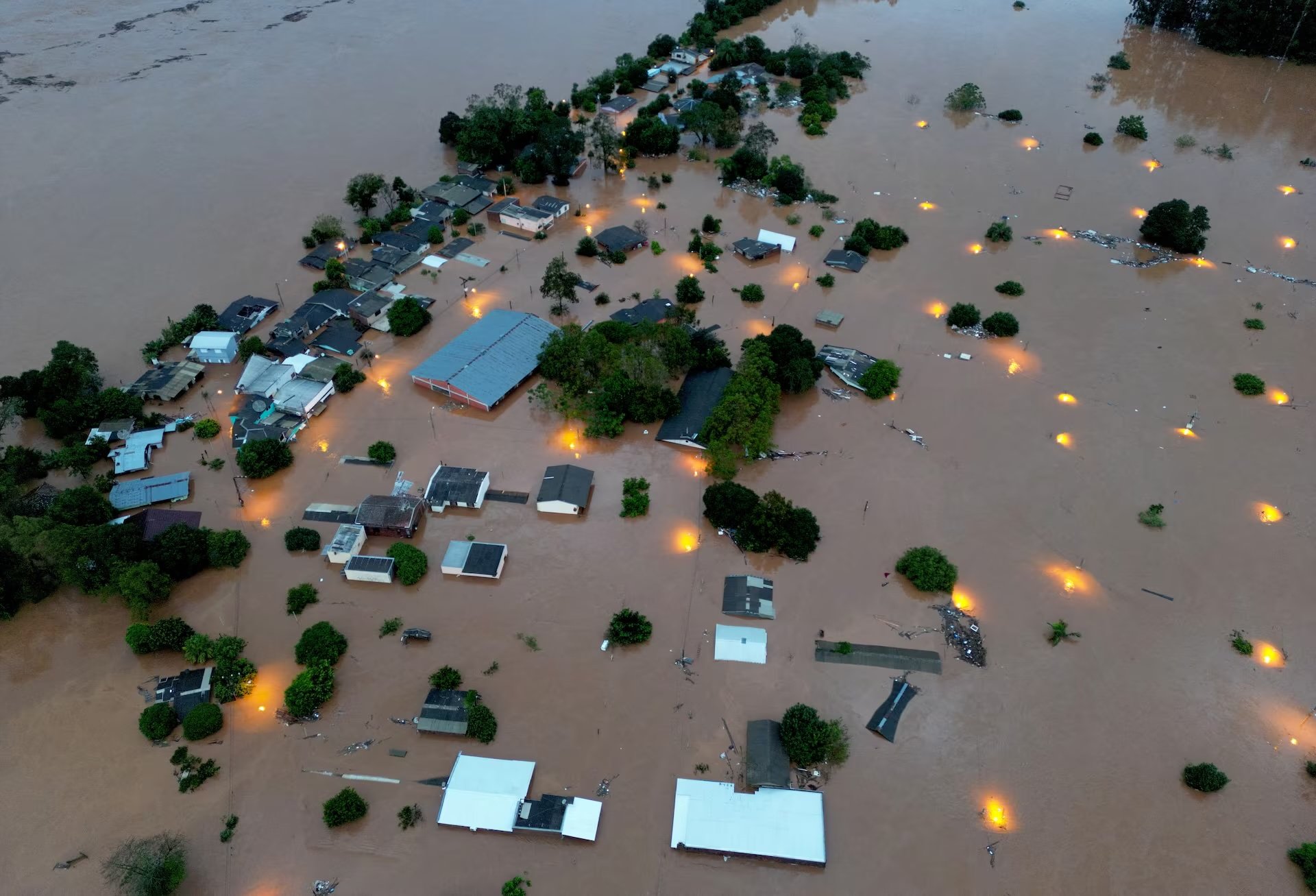From Blessed to Cursed: Brazil and the Global Spread of Climate Risks
Brazilians have long joked that their country is blessed: free from the hurricanes, volcanoes, earthquakes, and other natural disasters that torment the U.S. and other Latin American countries. However, the narrative of safety is rapidly changing as extreme weather events become more common. Recent events in Brazil have shattered this sense of security.
Just a few months ago, the country experienced the worst drought in a century, devastating parts of the Amazon rainforest. More recently, catastrophic floods in the Taquari River Basin killed at least 175 people and displaced 650,000, marking the largest displacement in the Americas due to flooding in 14 years. These events are making Brazilians feel that they too are cursed by the harsh realities of climate change.
Globally, the frequency and intensity of climate disasters are increasing, driven by the relentless march of climate change. Extreme weather events, including heatwaves, floods, and storms, have become more common. The World Meteorological Organization reported that the number of extreme weather events has increased fivefold over the past 50 years, resulting in significant economic losses and human casualties. The 2020 report by the National Oceanic and Atmospheric Administration (NOAA) indicated that there were 22 separate billion-dollar weather and climate disasters in the United States alone, setting a new annual record. “The future of extreme climate events has arrived,” scientists warn in the report, underscoring the urgent need to address these escalating risks.
Looking ahead, predictions for global climate catastrophes are grim. According to a recent study by the Intergovernmental Panel on Climate Change (IPCC), the frequency of severe weather events is expected to increase as global temperatures rise. The World Bank estimates that by 2050, 216 million people could be forced to migrate within their own countries due to climate change impacts such as flooding, sea-level rise, and droughts. This trend is not isolated to any one region but is a global phenomenon. “Global warming means that there is much more humidity in the atmosphere, which makes the rains far, far stronger,” notes Brazilian climate scientist Carlos Nobre.
So how do procurement leaders deal with this new uncertainty? One of our customers, a senior procurement buyer with a global supply chain, thought the path forward was very clear. “Any company that is single sourcing, any ingredient, anywhere, needs to drastically rethink its supply chain. There are no longer any safe havens that procurement leaders can rely on to always source from—you need to find alternative sources and start to diversify your risk across at least the Northern and Southern hemispheres.” This means companies must actively seek out and establish relationships with multiple suppliers across different geographies. Additionally, investing in predictive analytics and weather forecasting tools can help anticipate disruptions and enable more resilient planning. Diversification and proactive risk management are no longer optional but essential strategies for navigating the uncertain landscape of global climate risks.

